The automotive landscape is rapidly evolving, with electric vehicles (EVs) gaining prominence among consumers. In this comparison, we dive into two notable contenders: the CUPRA Tavascan and the VW ID.7. Both vehicles showcase impressive specifications and innovative technology, appealing to a wide range of automotive enthusiasts and eco-conscious drivers alike.
CUPRA Tavascan vs VW ID.7 – Differences & prices compared
Both models have their strengths – but which one suits you more?
Compare performance, efficiency, price and space directly: CUPRA Tavascan or VW ID.7?
Design and Body Type
The CUPRA Tavascan boasts an SUV body type that combines rugged looks with a sporty aesthetic. With dimensions of 4644 mm in length, 1861 mm in width, and 1597 mm in height, the Tavascan is designed for both comfort and commanding presence on the road.
In contrast, the VW ID.7 takes the form of a hatchback, which provides a dynamic yet practical option for urban driving. Measuring 4961 mm in length, 1862 mm in width, and 1536 mm in height, the ID.7 delivers a sleek profile that fits seamlessly into city environments while offering ample space for passengers and cargo.
Power and Performance
Performance-wise, both the Tavascan and the ID.7 offer rear-wheel and all-wheel drive options. The base models of both vehicles produce up to 286 HP (210 kW) and feature an impressive torque rating of 545 Nm. For those seeking even more power, higher trims can reach 340 HP (250 kW) with a torque of 679 Nm.
When it comes to acceleration, the VW ID.7 slightly edges out its competitor, with a 0-100 km/h time of 6.5 seconds compared to the Tavascan's 6.8 seconds. However, both models are capable of reaching a top speed of 180 km/h, ensuring they provide a thrilling driving experience.
Range and Efficiency
Range and energy consumption are crucial factors in the EV sector. The CUPRA Tavascan features a battery capacity of 77 kWh, with a range of up to 569 km. Its efficiency is notable, with energy consumption rated at 15.2-16.5 kWh/100 km.
The VW ID.7 takes the lead with an optional 86 kWh battery that extends the range up to 709 km on a single charge. With energy consumption between 13.6-16.2 kWh/100 km, the ID.7 impresses with its ability to deliver longer journeys without the constant need for recharging.
Interior and Comfort
Both vehicles provide seating for up to five passengers, with the CUPRA Tavascan offering a trunk capacity of 540 liters, ensuring ample space for cargo. The ID.7, while slightly smaller at 532 liters, still provides practical storage options for everyday use.
Interior design in both models reflects a modern approach, focusing on driver engagement and passenger comfort. The CUPRA Tavascan combines sporty styling with high-quality materials, while the VW ID.7 emphasizes a minimalist aesthetic that prioritizes functionality.
Innovation and Technology
Innovation is at the core of both the CUPRA Tavascan and VW ID.7. CUPRA channels its sporty essence into advanced driver-assistance systems, customizable ambient lighting, and entertainment features designed for connectivity and ease of use.
The VW ID.7, on the other hand, is equipped with an intuitive digital cockpit that integrates seamlessly with the driver’s needs, showcasing cutting-edge technology in infotainment and vehicle management. Both vehicles emphasize safety, with features like lane-keeping assist and adaptive cruise control enhancing the driving experience.
Conclusion: CUPRA Tavascan vs. VW ID.7
Choosing between the CUPRA Tavascan and the VW ID.7 ultimately comes down to personal preference. The Tavascan appeals to those seeking a sportier SUV silhouette, while the ID.7 provides a sleek, practical hatchback for urban settings. With impressive power, range, and innovative technology, both vehicles are exemplary representations of the future of electric mobility.
Here’s where it gets real: The technical differences in detail
Costs and Efficiency:
When it comes to price and running costs, the biggest differences usually appear. This is often where you see which car fits your budget better in the long run.
CUPRA Tavascan has a hardly perceptible advantage in terms of price – it starts at 45700 £, while the VW ID.7 costs 46400 £. That’s a price difference of around 655 £.
In terms of energy consumption, the advantage goes to the VW ID.7: with 13.60 kWh per 100 km, it’s somewhat more efficient than the CUPRA Tavascan with 15.90 kWh. That’s a difference of about 2.30 kWh.
As for range, the VW ID.7 performs clearly perceptible better – achieving up to 708 km, about 155 km more than the CUPRA Tavascan.
Engine and Performance:
Power, torque and acceleration say a lot about how a car feels on the road. This is where you see which model delivers more driving dynamics.
Both models deliver identical power – 340 HP each.
In acceleration from 0 to 100 km/h, the VW ID.7 is hardly perceptible quicker – completing the sprint in 5.40 s, while the CUPRA Tavascan takes 5.50 s. That’s about 0.10 s faster.
There’s no difference in top speed – both reach 180 km/h.
Both models offer the same torque – 679 Nm.
Space and Everyday Use:
Cabin size, boot volume and payload all play a role in everyday practicality. Here, comfort and flexibility make the difference.
Both vehicles offer seating for 5 people.
In curb weight, CUPRA Tavascan is barely noticeable lighter – 2178 kg compared to 2180 kg. The difference is around 2 kg.
In terms of boot space, the CUPRA Tavascan offers minimal more room – 540 L compared to 532 L. That’s a difference of about 8 L.
When it comes to payload, CUPRA Tavascan somewhat takes the win – 522 kg compared to 465 kg. That’s a difference of about 57 kg.
Who wins the race?
The VW ID.7 proves to be slightly ahead and therefore becomes our DriveDuel Champion!
VW ID.7 is the better all-rounder in this comparison.
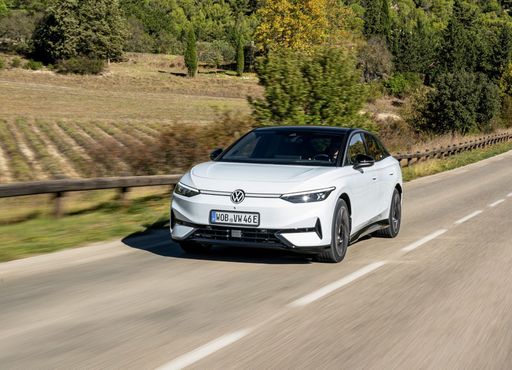 @ Volkswagen AG / VW Media
@ Volkswagen AG / VW Media
VW ID.7
CUPRA Tavascan
The CUPRA Tavascan is a striking electric crossover that blends aggressive, sporty design with surprising everyday practicality, pairing a coupe-like silhouette with SUV versatility. It feels lively and engaging on the road while offering premium touches inside, making it a compelling choice for buyers who want attitude without sacrificing comfort.
details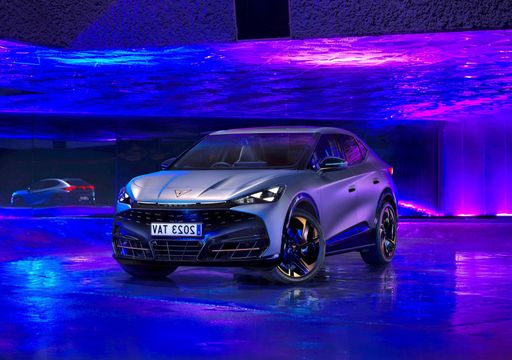 @ CUPRA / SEAT S.A.
@ CUPRA / SEAT S.A.
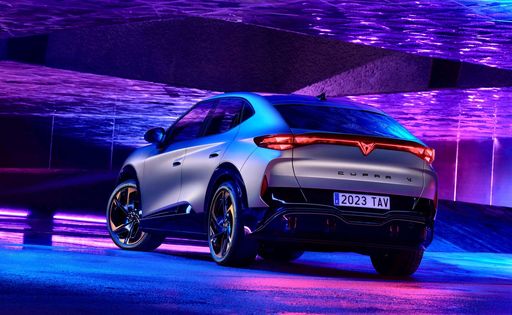 @ CUPRA / SEAT S.A.
@ CUPRA / SEAT S.A.
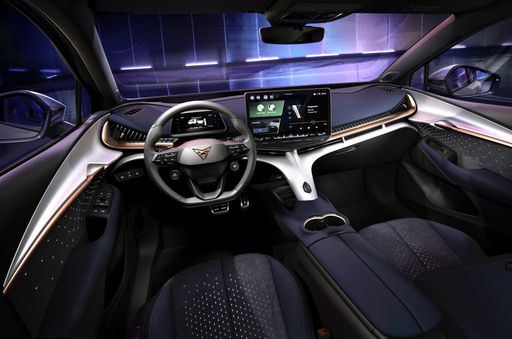 @ CUPRA / SEAT S.A.
@ CUPRA / SEAT S.A.
VW ID.7
VW ID.7 arrives as Volkswagen's electric grand tourer, pairing a low-slung, aerodynamic silhouette with a calm, understated interior that prioritizes comfort and space. It’s a sensible choice for buyers who want a relaxed, high-tech cruiser that covers motorway miles with poise rather than bravado.
details @ Volkswagen AG / VW Media
@ Volkswagen AG / VW Media
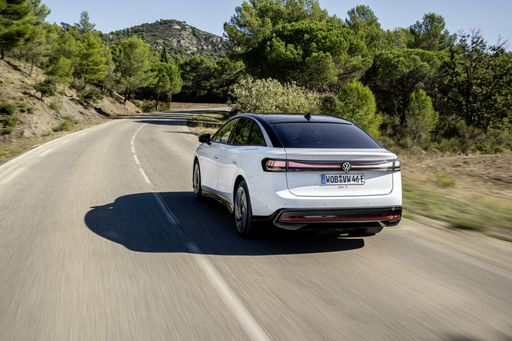 @ Volkswagen AG / VW Media
@ Volkswagen AG / VW Media
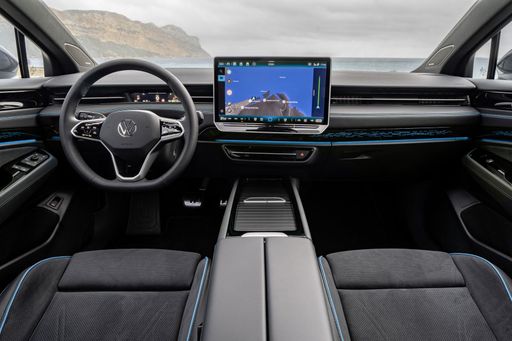 @ Volkswagen AG / VW Media
@ Volkswagen AG / VW Media
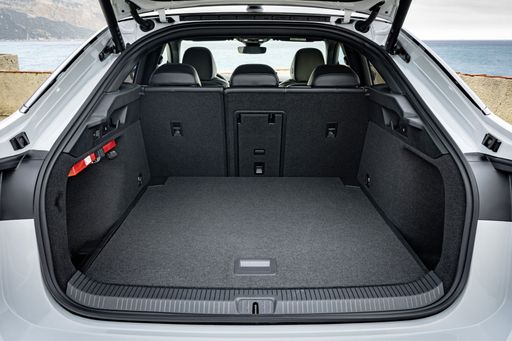 @ Volkswagen AG / VW Media
@ Volkswagen AG / VW Media
 @ CUPRA / SEAT S.A.
@ CUPRA / SEAT S.A.
|
 @ Volkswagen AG / VW Media
@ Volkswagen AG / VW Media
|
|
|
|
Costs and Consumption |
|
|---|---|
|
Price
45700 - 49600 £
|
Price
46400 - 54200 £
|
|
Consumption L/100km
-
|
Consumption L/100km
-
|
|
Consumption kWh/100km
15.9 - 17.1 kWh
|
Consumption kWh/100km
13.6 - 16.2 kWh
|
|
Electric Range
513 - 553 km
|
Electric Range
594 - 708 km
|
|
Battery Capacity
77 kWh
|
Battery Capacity
77 - 86 kWh
|
|
co2
0 g/km
|
co2
0 g/km
|
|
Fuel tank capacity
-
|
Fuel tank capacity
-
|
Dimensions and Body |
|
|---|---|
|
Body Type
SUV
|
Body Type
Hatchback
|
|
Seats
5
|
Seats
5
|
|
Doors
5
|
Doors
5
|
|
Curb weight
2178 - 2273 kg
|
Curb weight
2180 - 2325 kg
|
|
Trunk capacity
540 L
|
Trunk capacity
532 L
|
|
Length
4644 mm
|
Length
4961 mm
|
|
Width
1861 mm
|
Width
1862 mm
|
|
Height
1597 mm
|
Height
1535 - 1536 mm
|
|
Max trunk capacity
-
|
Max trunk capacity
1586 L
|
|
Payload
507 - 522 kg
|
Payload
460 - 465 kg
|
Engine and Performance |
|
|---|---|
|
Engine Type
Electric
|
Engine Type
Electric
|
|
Transmission
Automatic
|
Transmission
Automatic
|
|
Transmission Detail
Reduction Gearbox
|
Transmission Detail
Reduction Gearbox
|
|
Drive Type
Rear-Wheel Drive, All-Wheel Drive
|
Drive Type
Rear-Wheel Drive, All-Wheel Drive
|
|
Power HP
286 - 340 HP
|
Power HP
286 - 340 HP
|
|
Acceleration 0-100km/h
5.5 - 6.8 s
|
Acceleration 0-100km/h
5.4 - 6.6 s
|
|
Max Speed
180 km/h
|
Max Speed
180 km/h
|
|
Torque
545 - 679 Nm
|
Torque
545 - 679 Nm
|
|
Number of Cylinders
-
|
Number of Cylinders
-
|
|
Power kW
210 - 250 kW
|
Power kW
210 - 250 kW
|
|
Engine capacity
-
|
Engine capacity
-
|
General |
|
|---|---|
|
Model Year
2024
|
Model Year
2023 - 2024
|
|
CO2 Efficiency Class
A
|
CO2 Efficiency Class
A
|
|
Brand
CUPRA
|
Brand
VW
|
What drivetrain options does the CUPRA Tavascan have?
Available configurations include Rear-Wheel Drive or All-Wheel Drive.
The prices and data displayed are estimates based on German list prices and may vary by country. This information is not legally binding.
